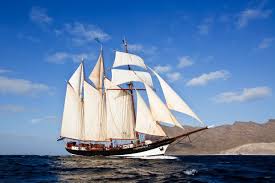
Introduction : Darwin legacy
The Darwin Legacy Voyage, a significant scientific expedition inspired by Charles Darwin’s pioneering work, has recently reached its halfway point. This landmark voyage, which retraces Darwin’s historic journey on the HMS Beagle, aims to explore and document the rich biodiversity of regions that were crucial to Darwin’s theory of evolution. As the expedition progresses, it continues to garner attention for its scientific contributions and its commitment to understanding the natural world.
Table of Contents
The Objective of the Darwin Legacy Voyage
Recreating Darwin’s Journey
The Darwin Legacy Voyage is a modern-day expedition that seeks to honor and build upon the legacy of Charles Darwin, whose observations during his journey on the HMS Beagle laid the foundation for his groundbreaking theory of evolution. The voyage follows a similar route to Darwin’s original journey, exploring key locations that were pivotal in his research and observations.
The primary objectives of the expedition are to study the biodiversity of these regions, document changes in ecosystems since Darwin’s time, and gather data to advance current scientific understanding. By revisiting the locations that were instrumental in Darwin’s research, the voyage aims to provide insights into how species and ecosystems have evolved over the centuries.
Scientific Goals
The scientific goals of the Darwin Legacy Voyage include:
- Biodiversity Assessment: Cataloging and studying the flora and fauna in the regions visited, with a focus on identifying new species and understanding changes in existing populations.
- Ecological Changes: Analyzing changes in ecosystems and comparing current data with historical observations to assess the impact of environmental changes and human activities.
- Educational Outreach: Sharing findings with the public and educational institutions to promote awareness of evolutionary biology and conservation efforts.
Progress and Achievements
Milestones Reached
As the Darwin Legacy Voyage passes the halfway mark, several key milestones have been achieved. The expedition has successfully visited numerous locations that were significant to Darwin’s research, including the Galápagos Islands, the Cape Verde Islands, and various coastal regions of South America.
The team has made notable discoveries, including the identification of previously unknown species and new insights into the behavior and ecology of well-known species. These findings contribute to a deeper understanding of evolutionary processes and the impacts of environmental changes over time.
Data Collection and Analysis
The voyage has involved extensive data collection, including biological samples, environmental measurements, and observational records. Researchers have used modern technologies, such as genetic sequencing and remote sensing, to enhance their analyses and gain more detailed insights into the ecosystems being studied.
Preliminary results from the data collected during the first half of the voyage indicate significant changes in some of the ecosystems since Darwin’s time. These changes highlight the ongoing impact of factors such as climate change, habitat destruction, and invasive species on biodiversity.

Challenges and Adaptations
Navigating Difficult Conditions
The Darwin Legacy Voyage has faced several challenges, including navigating through unpredictable weather conditions and remote, sometimes difficult-to-access locations. The team has had to adapt their plans and strategies to address these challenges, ensuring that scientific goals are met despite the obstacles.
One of the major challenges has been dealing with the logistical complexities of operating in remote areas. The team has employed advanced technology and innovative methods to overcome these difficulties, including the use of satellite communications and specialized equipment for fieldwork.
Addressing Environmental Impact
The voyage has also been mindful of its own environmental impact. Efforts have been made to minimize the footprint of the expedition on the ecosystems being studied. This includes adhering to strict protocols for waste management, avoiding disturbance to wildlife, and ensuring that all activities are conducted in an environmentally responsible manner.
Impact and Implications
Contribution to Science
The Darwin Legacy Voyage is making a significant contribution to the field of evolutionary biology and conservation science. By revisiting the regions that were crucial to Darwin’s research, the expedition provides valuable data on how species and ecosystems have evolved over time. This information helps scientists better understand the dynamics of evolution and the factors that influence biodiversity.
The findings from the voyage have implications for conservation efforts, as they highlight the need for targeted strategies to protect and preserve vulnerable ecosystems. The data gathered will inform future research and contribute to the development of effective conservation policies.
Educational and Public Engagement
The voyage has also played a key role in engaging the public and educational institutions in the field of science. Through outreach activities, educational programs, and media coverage, the expedition has raised awareness about the importance of biodiversity and the legacy of Charles Darwin.
The educational components of the voyage include presentations, workshops, and interactive resources that aim to inspire and inform students and the general public. By connecting the historical significance of Darwin’s work with contemporary scientific research, the voyage fosters a greater appreciation for the natural world and the ongoing importance of scientific exploration.
Looking Ahead: The Final Leg of the Voyage
Upcoming Goals
As the Darwin Legacy Voyage approaches its final stages, the team is focused on achieving their remaining scientific objectives and completing their research in the remaining locations. This includes final data collection, detailed analysis of findings, and preparation for the presentation of results.
The final leg of the voyage will involve a comprehensive review of the data collected, synthesis of research findings, and preparation for dissemination to the scientific community and the public. The team is committed to ensuring that the results of the expedition have a meaningful impact and contribute to advancing knowledge in evolutionary biology and conservation.
Conclusion

The Darwin Legacy Voyage has reached a significant milestone as it passes the halfway mark, highlighting the progress and achievements of this groundbreaking expedition. By revisiting the regions that were central to Charles Darwin’s research, the voyage continues to make valuable contributions to science, conservation, and public education.







